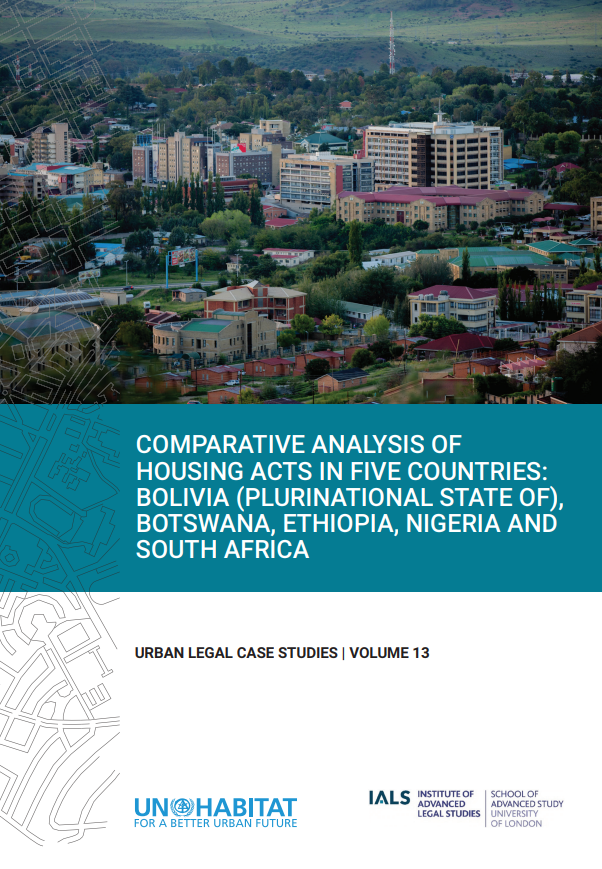Comparative Analysis of Housing Acts in Five Countries
Bolivia (Plurinational State of), Botswana, Ethiopia, Nigeria, And South Africa: Urban Legal Case Studies, Volume 13

UN-Habitat provides technical assistance and advisory services to member states in legal reform processes to bring about social and economic transformation and enhance effective service delivery for sustainable urban development. Benchmarking case studies and comparative analysis are key aspects of the UN-Habitat methodology for legal and governance reform. UN-Habitat and the Institute of Advanced Legal Studies at the University of London, UK developed this comparative analysis of housing laws to assist the Government of Lesotho to address the increased demand for urban housing, improving residents’ quality of life, enhancing services accessibility, and improve mobility and security of tenure while recognizing the environmental impact of climate change.
This comparative analysis report provides insight into available housing legislative models that are already in use in Bolivia (the Plurinational State of), Botswana, Ethiopia, Nigeria, and South Africa. These are countries with similar socioeconomic backgrounds, land availability, and environmental constraints and challenges. With a comparative analysis of housing legislation, recommendations have been proposed on the best model available that could be entirely adopted or modified by the Lesotho Government to suit its country’s needs and local context.
To complement this analysis, an additional report was developed that contains the shortlisted policy options to achieve the policy aims of the National Housing Policy of 2018 for Lesotho. Several policy options have been identified and an analysis and discussion of their potential impact provided that compares the advantages and disadvantages of each in terms of costs and benefits (wherever appropriate). This will establish which option or combination of options would achieve the objectives and ultimately the policy aims.
Abstract based directly on original source.


Comments